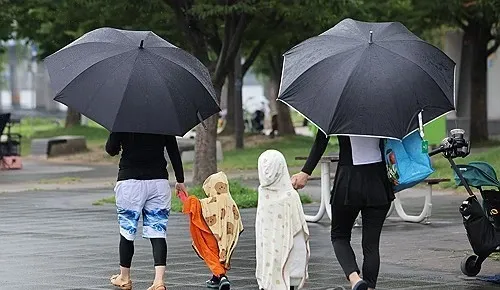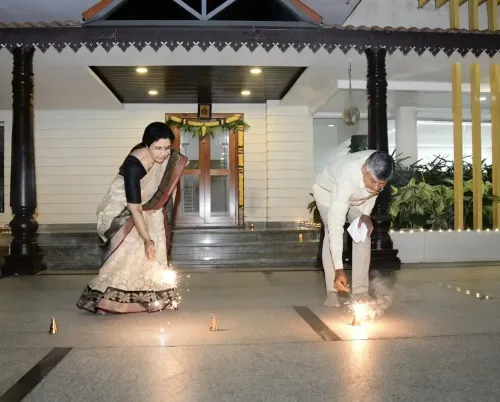Will Rain Bring Relief from Heat Waves in South Korea?

Synopsis
Key Takeaways
- Intermittent rainfall expected across South Korea until Tuesday night.
- Heavy downpours of 30 to 50 mm/hour likely in certain regions.
- Strong winds over 70 kph and high waves pose risks for beachgoers.
- Temporary relief from heat waves, but hot and humid weather may return.
- New regulations ensure outdoor workers receive adequate breaks during extreme heat.
Seoul, July 14 (NationPress) The national meteorological agency announced on Monday that intermittent rain will occur across South Korea until Tuesday night. Some areas, especially along the eastern coastline of Gangwon Province, could experience heavy rainfall, with rates of 30 to 50 millimeters per hour.
Rainfall is expected to impact Gangwon, North Chungcheong, and Gyeongsang provinces on Monday, gradually spreading to affect most regions of the country by Tuesday afternoon, according to the Korea Meteorological Administration (KMA).
Notably, the central and northern sectors of Gangwon's eastern coastline should prepare for significant rainfall, estimated at 30 to 50 mm per hour from Monday afternoon through the early hours of Tuesday, as reported by Yonhap.
The forecast anticipates a two-day precipitation total of 50 to 100 mm on Ulleung Island, 20 to 60 mm in the Gyeongsang provinces, 10 to 50 mm in Seoul, western Gangwon, Chungcheong, and Jeolla provinces, and 5 to 20 mm on Jeju and the Yellow Sea islands.
The agency has cautioned against visits to the eastern coastal beaches until Tuesday due to strong winds exceeding 70 kph and hazardous wave conditions.
This rainfall is expected to temporarily alleviate the ongoing heat waves across the nation; however, hot and humid conditions are predicted to return thereafter, as stated by the KMA.
Last week, a severe heat wave affected the region, with maximum daily temperatures soaring to 37 Degrees Celsius in certain areas, as per the national weather agency.
Throughout the previous week, Seoul and nearly all regions were under heat wave advisories or warnings due to hot and humid air moving in from the southwest.
In light of these conditions, the labour ministry declared on Friday that outdoor employees will receive extended breaks starting next week, following a series of heat-related fatalities among workers. Under the new rules, employers are required to provide outdoor workers with at least 20 minutes of rest every two hours when the perceived temperature hits 33 Degrees Celsius or higher.
This regulation follows recent tragic incidents involving outdoor workers who succumbed to the extreme heat earlier this month.









